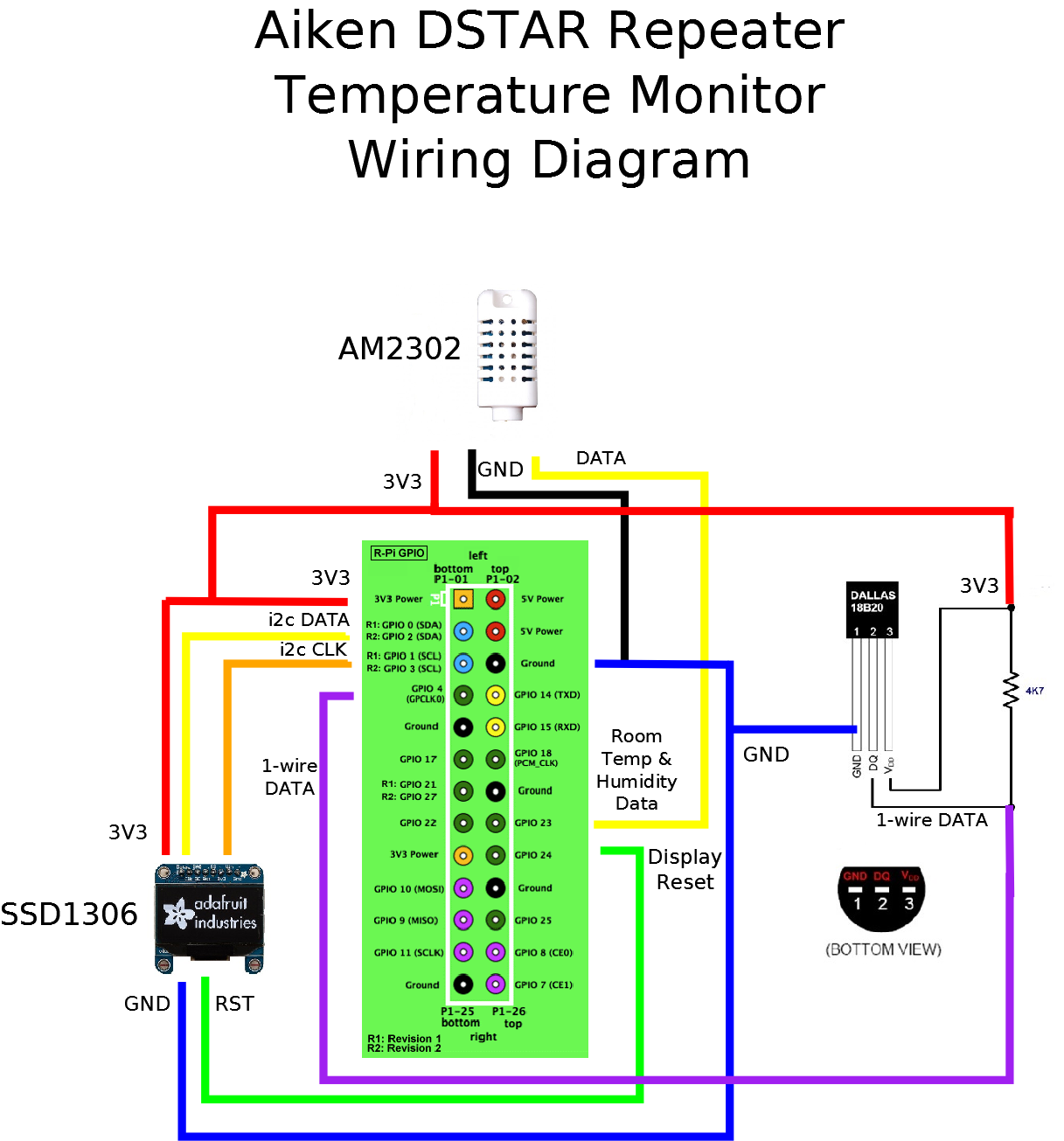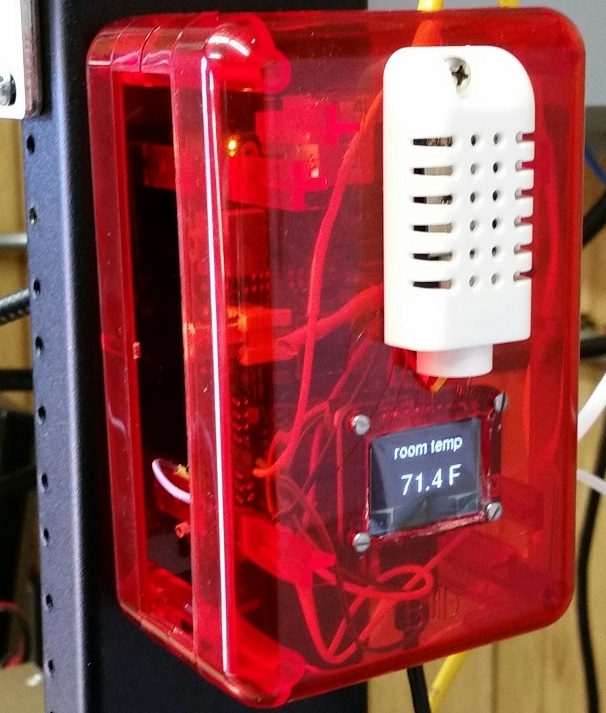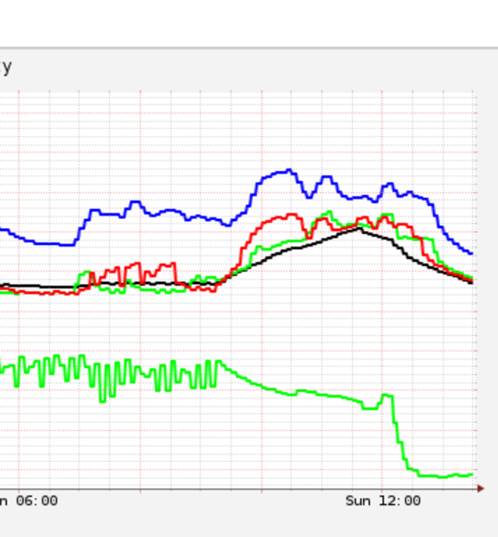The Raspberry Pi is the key element of the monitor and performs the functions of reading, graphing and alerting (room) temperatures (room & equipment) and room humidity. The Raspberry Pi Python program is run as a cron job every 5 minutes. Program reads DSTAR Repeater temperature sensors and uses RRDTOOL to database the readings and generate graphs for display on web page. RRDTOOL creates the graphs for day, week, month and year plotting of temperatures and humidity values.
This program uses the same code for reading the AM2302 for room temperature and 1-wire sensors. The temperature display uses a small OLED display from Adafruit (SSD1306). The display is driven by an i2c bus from the Raspberry Pi. The program uses Adafruit-provided libraries for reading the AM2302 (Adafruit_DHT) and writing to the SSD1306 display (Adafruit_SSD1306). The program continuously loops through routines that read the AM2302 for room temperature & humidity and the 1-wire sensors for equipment temperatures. The 1-Wire DS18B20 devices are inserted in the power supply, uhf and vhf repeater equipment.
The room temperature routine uses a GMAIL account to send text message and email alerts if room temperature exceeds the predetermined value.

Below is a photo of the hardware installation of the temperature monitor on the side of repeater rack (left) and a screenshot of the web page illustrating a failure of the room air conditioner and rise of the room temperature to alert level (right). The graph shows the room temperature (black line) increase until the A/C was restarted bringing the room temperature down. Lower green line is room humidity. The other lines are equipment temperatures.


The live public web page of repeater temperatures can be seen here. If you receive a security warning for the web site accept it. Contact me at the “Contact Us” page and I will provide detailed instructions and copies of key files for building your own temperature monitor. This project does take some knowledge of the Raspberry Pi and ability to configure Python programs.
